Types of Inflorescence - Cymose inflorescence | 11th Botany : Chapter 4 : Reproductive Morphology of Angiosperm
Chapter: 11th Botany : Chapter 4 : Reproductive Morphology of Angiosperm
Cymose inflorescence
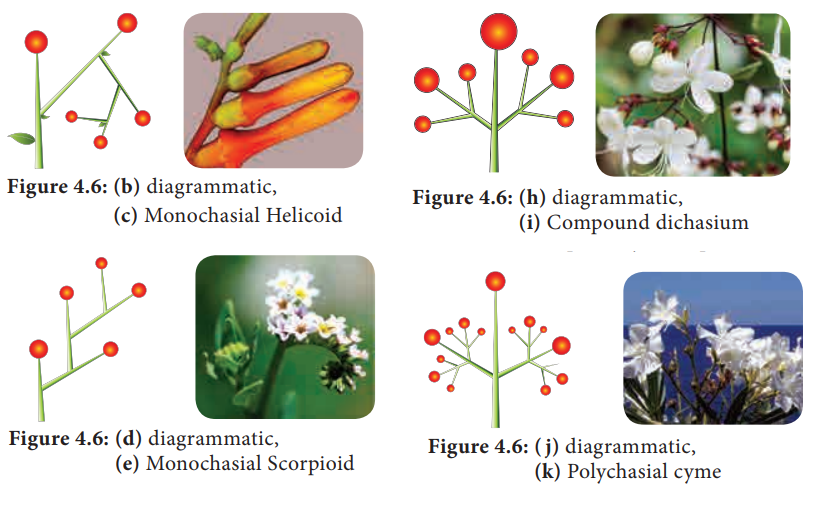
Inflorescences may also have classified based on
branching, number and arrangement of flowers, and some specialized structures.
I.
Indeterminate
(racemose)
II. Determinate (cymose)
III.
Mixed
inflorescence: Inflorescence
of some plants show a combination of indeterminate and determinate pattern
IV.
Special
inflorescence: Inflorescence
which do not confined to these patterns
Cymose inflorescence.
![]()
![]()
![]()
Central axis stops growing and ends in a flower,
further growth is by means of axillary buds. Old flowers present at apex and
young flowers at base
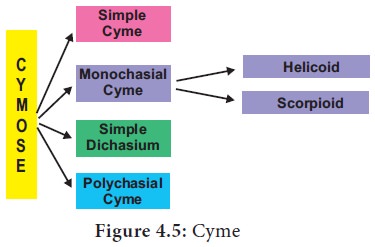
1. Simple
cyme (solitary): Determinate inflorescence consists of a single flower. It may be terminal or
axillary. Example: terminal in Trillium
grandiflorum and axillary in Hibiscus.
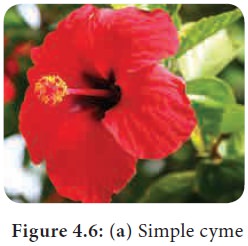
2. Monochasial
Cyme (uniparous): The main
axis ends with a flower. From two lateral bracts, only one branch grows
further. It may be helicoid (bostryx)
or Scorpioid (cincinnus).
a.
Helicoid: Axis develops on only one side and forms a coil structure atleast at the earlier development
stage. Example: Hamelia, potato.
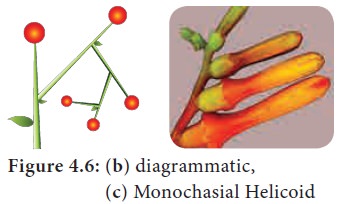
b.
Scorpioid: Axis develops on alternate sides and often becomes a coil structure. Example: Heliotropium.
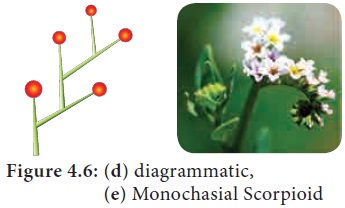
3. Simple
dichasium (Biparous): A central
axis ends in a terminal flower; further growth is produced by two lateral buds.
Each cymose unit consists of three flowers of which central one is old one.
This is true cyme. Example: Jasminum.
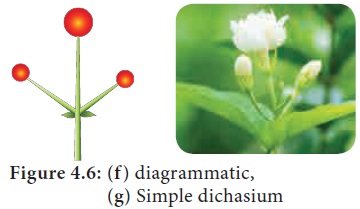
4.
Compound dichasium: It has many
flowers. A terminal old flower develops lateral simple dichasial cymes on
both sides. Each compound dichasium consists of seven flowers. Example: Clerodendron.
A small,simple dichasium is called cymule
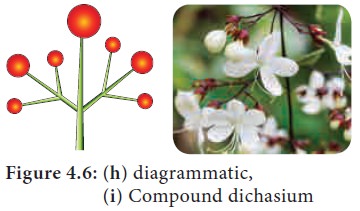
5.
Polychasial Cyme (multiparous): The central axis ends with a flower. The lateral axes branches
repeatedly. Example: Nerium
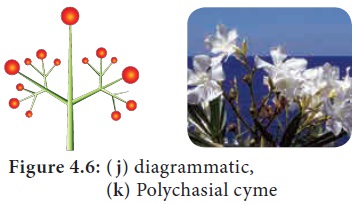
Sympdial Cyme: In monochasial cyme, successive axes
at first develop in a zigzag manner and later it develops into a straight
pseudo axis.
Example: Solanum americanum.
Related Topics